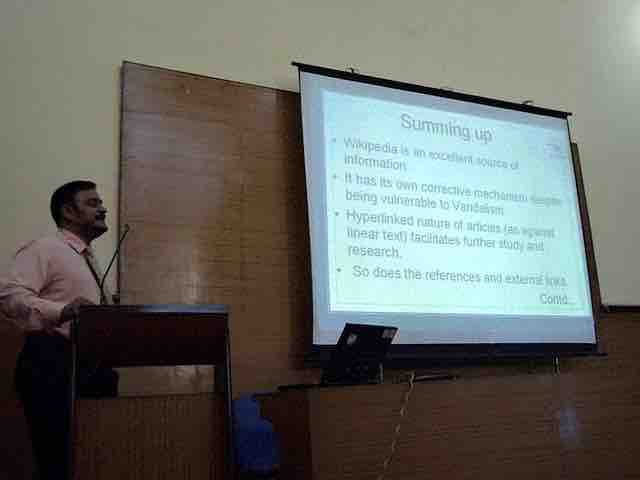Your Conclusion: Leave a Lasting Impression

The conclusion of your speech summarizes your main points and purpose while leaving a lasting impression on your audience.
Conclusion of a Presentation at Wiki Conference India.
If your body is the meat and potatoes of your speech, then the conclusion is the icing on the cake. Your conclusion is delivered at the end of the speech and is often what most people remember immediately after your speech has ended. As important as your introduction is for grabbing the audience's attention, the conclusion is doubly important as it leaves the audience with a lasting impression.
Summarize Your Main Points
The purpose of the conclusion is to summarize your main points and to prepare the audience for the end of your speech. You'll want to recapture the essence of your speech: your main points and the purpose of why you spoke. It is especially important to remember that the conclusion of your speech is not the time to introduce new points or new supporting evidence; doing so will only confuse the audience. Try to think of your conclusion like tying a bow or a ribbon: it's the final touch that makes your project stand out.
Paraphrasing Versus Repeating
While summarizing your main points is important, be wary of simply repeating your main points word for word. You'll want to paraphrase your main points rather than directly repeat them from your speech's body. Paraphrasing allows you to capture the essence of your speech, unlike rote repetition of identical sentences you may have spoken just minutes earlier.
End on a High Note
Your conclusion is the last thing your audience hears from you. Just as an introduction can make or break a speech, you always want to end your speech on a high note with something memorable. The conclusion is where you'll insert your take-away message: what do you want the audience to remember after you've finished speaking? What do you want them to recall in the days or weeks after your speech?
To create a memorable ending, you may want to share a quotation or anecdote. It's important to remain relatable and credible to the audience up until your final word, so be sure to craft your conclusion in a way that is still appropriate to the topic, audience, and venue.
Writing Your Conclusion
Like the introduction, you'll want to write your conclusion last. The introduction and conclusion of your speech serve as bookends to your speech's body, so it only makes sense that you'll want to craft them after you've written your body.
Review your speech's body and ensure that you've touched upon all the main points you wish to discuss, then rephrase those main points in your conclusion. Determine the take-home message that you want to leave with your audience and either include it word for word in your conclusion or use it as a guiding theme for how you'll end your speech. If you have any final anecdotes or quotations to share that either drive home a particular point or capture the theme of your speech, include it here.
While there is no set time or sentence limit for your conclusion, make sure you don't finish your speech so suddenly that your audience is caught off guard when the speech ends. Using trigger phrases such as "in conclusion" or "in summary" signify to your audience that the speech is about to end and that they should pay special attention to your final thoughts.